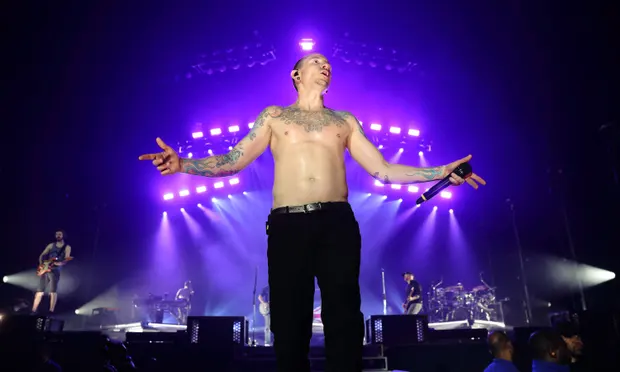Review of Linkin Park
People were aware of what to expect from Linkin Park when they first appeared in 2001. They were a younger version of the nu-metal boy band Limp Bizkit, who combined rap and grunge to sell millions of CDs. Ten years later, instead of being chased out of the house by their parents, their fans pull up in Range Rovers. The band members are sensible-haired fathers who no longer create music that would cause anyone over the age of sixteen to curdle their milk. Pink Floyd and Radiohead have been linked to them and their most recent album, A Thousand Suns.
XEM THÊM :
Sự Thật Về Game Bài Macau Trong Làng Game Đổi Thưởng 2022
The group has undoubtedly picked up a few tips, including how to put on a fantastic stadium performance. The stage is adorned with enormous screens, but it is low and extends right into the arena, creating the impression that it is both a spectacle and "one with the fans," who respond to the choruses like a massive choir. Chester Bennington, the band's main vocalist, occasionally locates a location away from the spotlights at the side of the stage, where he quietly dances throughout Mike Shinoda's rap and singing spots and waves to specific fans who grab his attention. Simply said, they appear to be investing more than the typical stadium-rock band.
The most startling alteration, though, is musical. They claim that "destroying and reconstructing our band" has led them to a certain level of maturity. Linkin Park's more recent music include pianos, ballads, and electronica, and Chester Bennington is genuinely crooning, unlike their earlier tracks, which sound like your father gurgling in the morning while the car is running. Iridescent is just a (gasp) beautiful song, and The Robot Boy, which has two drum kits, conjures up the fervor of Queen's Radio Ga Ga at Live Aid. Other tracks could be Muse if metal had been their genre instead of pomp-rock.
There are times when things go wrong. For example, while Bono would light up the crowds with a massive military spotlight, Chester Bennington settles for a cheap-looking torch from the hardware store. The Boney M-inspired rap intro to Waiting for the End abruptly transforms into a blissed-out haze reminiscent of Primal Scream's beatific Higher Than the Sun before erupting once more into a beautiful chorus about existential panic. The massive Numb has a sound that is a cross between Take That and Depeche Mode. One of the most unexpected reinventions of the decade is completed by Bennington when he sings a background tune through a vocoder.
Read Article:



Comments
Post a Comment